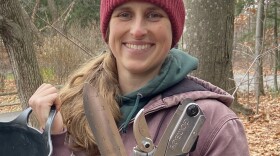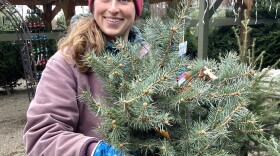
Emma Erler
Lead Horticulturist & Exhibits Assistant for Squam Lakes Natural Science CenterEmma received a B.S. in Environmental Horticulture and a MEd in Educational Studies from the University of New Hampshire. Her expertise is in ecological landscaping and native plants, and she loves providing education on topics such as gardening for wildlife and beneficial insects. Emma’s past professional experience includes being a horticultural field specialist for UNH Extension, and horticulturist positions at Tower Hill Botanic Garden and Heritage Museums and Gardens, both in Massachusetts.
-
In winter, many gardeners bring their yards alive with color and movement by feeding birds.
-
Snow, ice, and wind can take a toll on evergreen shrubs.
-
Be aware that some of the most popular holiday plants can be quite toxic if ingested.
-
One of the best things about shopping for gardeners is that whatever you choose, it is likely they’ll use it for years to come.
-
Keep memories alive with a living Christmas tree inside your home during the holidays, to plant in your yard or garden in the spring.
-
Most holiday decorations, like wreaths, swags and centerpieces, can be created with natural materials gathered from your yard and garden.
-
A listener asks when to prune overgrown oakleaf hydrangeas, a native shrub prized for its oak-shaped leaves and fall color.
-
If you've made the investment in gardening tools, now is the time to clean and sharpen them so they're ready to go in spring.
-
With the leaves on the ground, you can see the shape of the trees and shrubs in your garden, but leave the pruning until spring!
-
A head of garlic, like tulips or daffodils, is a bulb you can plant in the fall that will pay dividends in spring.











